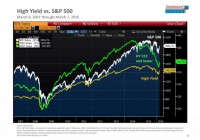How To Bake A Highly Deficient Cake
What happens when you leave out a key ingredient in the recipe for baking a cake? We won’t keep you in suspense. What you get is a highly deficient cake, but how it is highly deficient can tell you quite a lot about what the omitted ingredient contributes to a competently executed cake! At Bristol Science Centre, Nerys and David illustrate what we can learn by baking four different cakes – one batch with all the ingredients the basic recipe calls for, then other batches where either the margarine, eggs or baking powder has been excluded from the recipe. The following video illustrates how the resulting cakes baked with a single missing ingredient differ from a proper cake baked with all the ingredients. The same principle applies to data analysis. For instance, if a set of economic data omits the contributions of one particular sector of the economy, and that sector turns out to contribute a large share to the performance of the overall economy, the analysis produced using such data that excludes the omitted sector’s contribution will be highly deficient, because the data itself is not adequately representative of the economy being analyzed. Much like what happens when you bake a cake without one ingredient and compare it with a cake baked with all of them, the deficiency becomes very evident when you compare the results of the deficient analysis with the results of analysis performed with data that does not omit the missing sector’s contributions. If a professional baker omitted an ingredient in a cake recipe, then their competence would certainly be at issue. If they weren’t aware that the ingredient was missing, it might all be chalked up to simple ignorance on their part – the kind of mistake that many of us all make from time to time, that we acknowledge, learn from and do not repeat. But if they were aware of the deficiency and then went on to claim that the results of their deficient recipe were just the same as a properly baked cake, then their integrity would certainly also be at issue. We wonder how many people would continue to buy the “cakes” of such a highly deficient professional baker!
